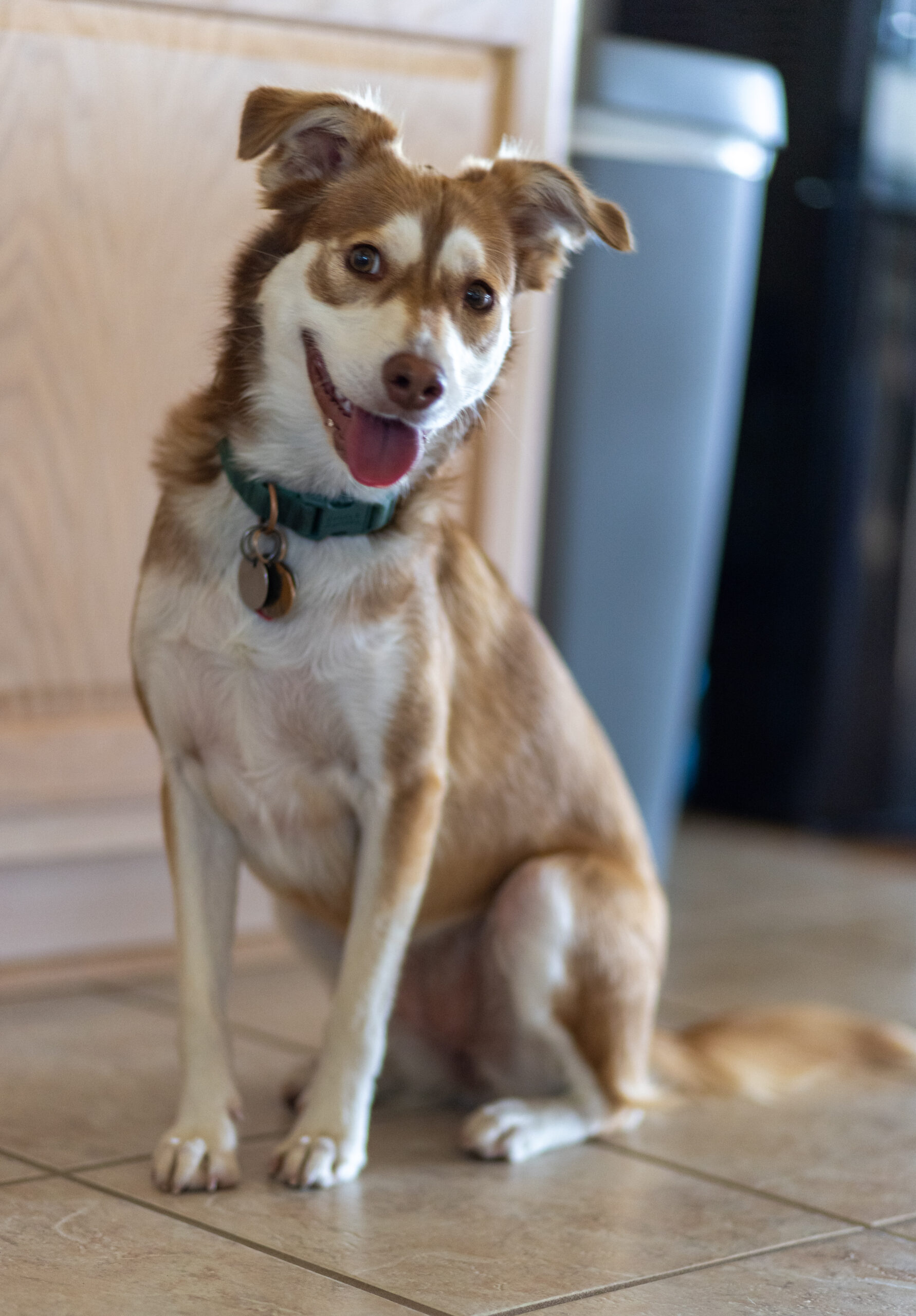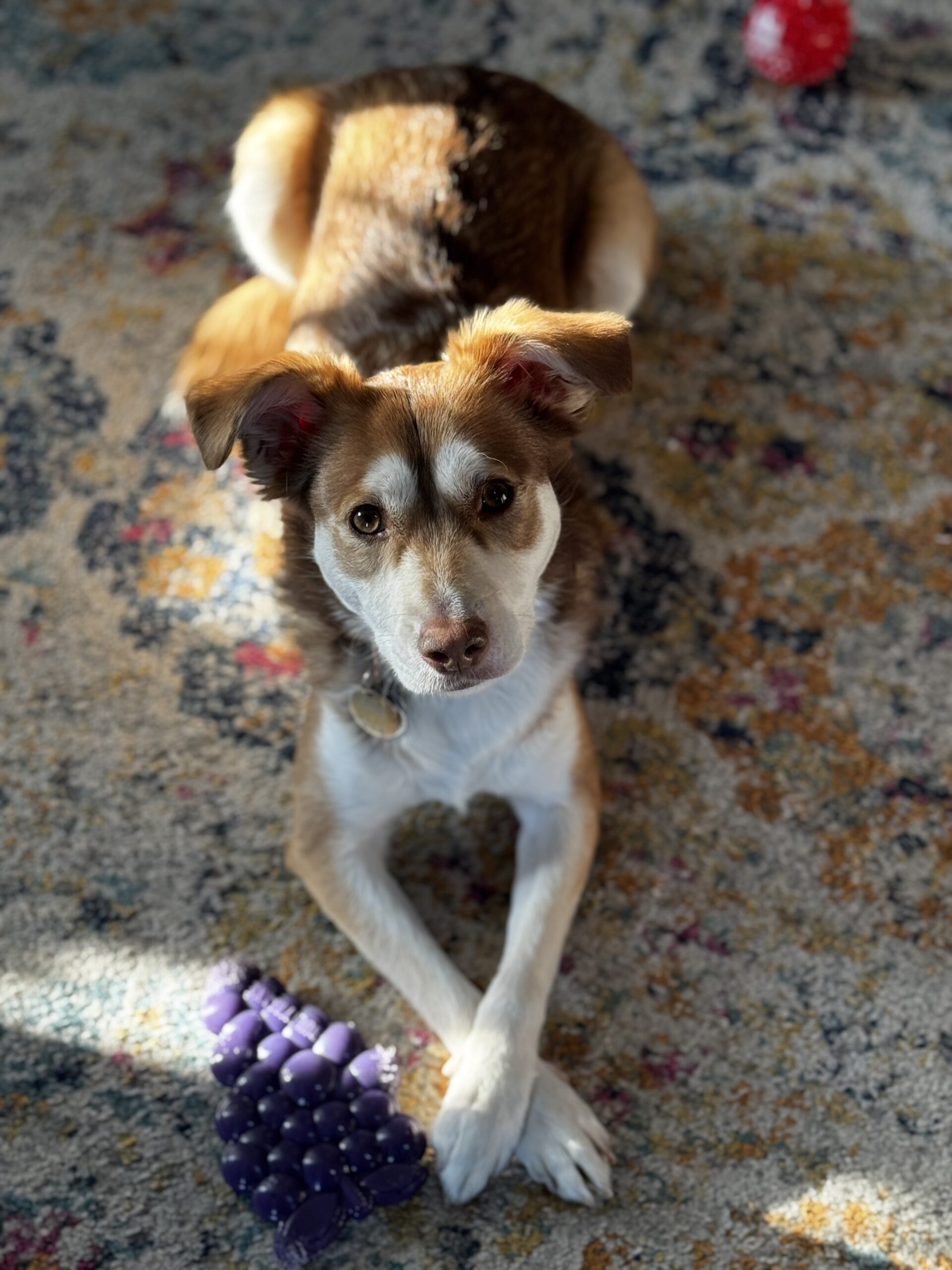Working with Penny on Her Leash Reactivity: A Helpful Guide
Penny is an incredibly friendly and social dog—she adores people and other dogs. However, when it comes to small creatures like squirrels, cats, and skunks, her prey drive takes over, and she instinctively bolts, lunges, and pulls to chase whatever catches her eye.
Living in an apartment means Penny gets a lot of walks—typically 5 to 6 each day—to do her business outside. This routine not only keeps her happy and active, but it also benefits me as I work from home. These walks give me fresh air, clear my mind, and provide a welcome break from screens. Whenever possible, I bring Penny along on errands, which helps expose her to new environments and reinforces calm behavior in different settings.
Reactive Dog Training Techniques We Use
1. Establishing Leadership and Trust
A calm and secure dog looks to their owner for guidance rather than reacting on impulse. Establishing clear leadership—not through dominance, but through consistency and confidence—helps Penny understand that she doesn’t need to take control of every situation. Dogs naturally look for leadership in their environment, and providing that role in a structured and reassuring way reduces stress and overreaction. One thing that I’ve learned just from having Penny is that if you don’t show leadership, she will try to take control — and from meeting countless other dogs and owners on the street — I’ve been absolutely shocked by how poorly other owners show leadership, basically allowing their dog to walk them!
Things I learned:
- Projecting calm confidence—dogs mirror human energy.
- Establishing boundaries through consistent rules and body language.
- Leading the walk—teaching the dog to follow rather than control movement.
- Providing exercise, discipline, and affection in that order to create balance.
- Exercise is huge, and since we live in a confined space, she relies on my family and me to get her out and move. It is my responsibility that she’s drained and tired at the end of the day. It keeps her out of trouble, and in the house, she’s literally the best dog you could imagine.

Don’t blink!
2. Clear Communication and Boundaries
Dogs don’t perceive the world the same way humans do, so rather than treating Penny like a “furry child,” I focus on communicating in a way she understands. This includes using body language, tone of voice, and clear, consistent expectations to reinforce calm behavior. Creating predictability in our daily routine helps her feel more secure and less reactive.
3. Controlled Exposure to Triggers
Rather than relying on constant food rewards, I focus on Penny’s ability to process her environment calmly. We work on gradually exposing her to triggers at a distance where she notices but doesn’t react. Over time, as she gains confidence and learns to look to me for guidance, her reactions become less intense, and she can disengage more easily.
This has been noticeable as we enter our third year together, she’s listening better than ever, and her reactivity is light years ahead of what it was.
4. Redirecting Prey Drive
Instead of allowing Penny to fixate on a squirrel or cat, I redirect her focus back to me using firm but calm communication. Teaching her that she doesn’t need to chase every moving thing has been key to managing her impulse control.
I do this with a leash correction, and having her sit. And the waiting game begins. We won’t move until she’s calm, cool, and collected.

In the middle of tracking deer tracks
Essential Strategies That Help Us
- Calm Leadership: Projecting confidence and staying composed helps Penny mirror that energy.
- Predictability: Establishing a consistent routine reduces anxiety and prevents erratic behavior.
- Engagement: Encouraging Penny to focus on me rather than external distractions creates a stronger connection.
- Body Language Awareness: Dogs are highly attuned to body posture and energy, so I ensure my actions convey clarity and calmness.
Managing Penny’s Prey Drive
Penny’s strongest reaction is to small animals, so I’ve prioritized managing her natural instincts:
- Squirrels: Teaching her to pause and check in with me rather than lunging toward them.
- Cats: Reinforcing that calm behavior around cats is expected.
- Skunks: Ensuring she understands when to avoid certain animals rather than engaging.
Rather than treating her reactions as “bad behavior,” I recognize them as instincts that need to be redirected in a structured way.

Friendly Reactivity
While Penny is friendly and social, her excitement sometimes escalates when she sees new dogs or people.
- Keeping calm energy ensures she doesn’t get overstimulated.
- Teaching patience and impulse control helps prevent excessive pulling.
- Allowing her to engage when calm reinforces appropriate social behavior.
Training Mindset and Tips for Success
- Remain Consistent: Dogs thrive on structure and repetition.
- Control the Environment: Setting up success in controlled situations allows for smoother training.
- Communicate Clearly: Using calm, firm, and predictable signals reduces uncertainty and stress.
- Be Patient: Progress isn’t instant, but long-term results come from small, consistent improvements.
- Use Resources: We took advantage of training resources like this to help mold Penny into an obedient, friendly, and happy doggy.

Don’t let the cuteness fool you, she’s quite the savage when the cameras aren’t on 😉
Progress Takes Patience
Training Penny has been an ongoing journey, but we’ve made incredible progress by focusing on structured leadership and calm communication rather than over-relying on food-based tricks. She now looks to me for direction more often than not which is so much better than making impulsive decisions on her own. I can see it in her eye when she looks up at me on our walks <3.
For anyone struggling with leash reactivity, focusing on clear leadership and a calm, structured approach can make a world of difference. Training isn’t about force or bribery—it’s about creating an environment where your dog trusts you to lead, making walks more enjoyable for both of you.